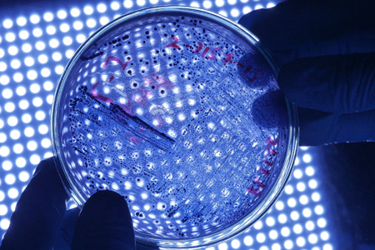Legionnaires' Disease: How IoT Solves For Property Risks Emerging From The Pandemic
By Jeremy Prince

Last year, COVID-19 emerged as a global health threat, in more ways than one. In additional to the toll posed by the virus itself, the pandemic presents a number of other safety threats as priorities and resources shift to tackle the larger concern at hand. In particular, as buildings shut down to accommodate stay-at-home orders, property teams may be suspending routine maintenance tasks for the time being, which enables harmful bacteria to spread until workforces return.
Legionnaires’ disease, a lung infection caused by Legionella bacteria that can kill an estimated 10 percent of those who contract it through complications associated with the infection, is one such threat. Legionella bacteria, which are commonly found in water, can proliferate in stagnation, which is at increased odds of occurring as fewer people visit and occupy buildings. In fact, foreseeing this risk, in late September 2020 the UK’s Health and Safety Executive (HSE) released a bulletin warning premises newly opening or re-opening after COVID-19 related lockdowns would need to be assessed for Legionella risk.
However, while the impact of COVID-19 presents increased opportunity for Legionnaires’ disease to develop, it is not solely a pandemic-specific concern, nor one isolated to the UK. In the U.S., the CDC reports that the number of cases of Legionellosis, which includes Legionnaires’ disease, has increased since 2000, with nearly 10,000 cases in 2018 in the U.S. alone. Given the circumstances resulting from the coronavirus outbreak are expected to exacerbate that risk, combating Legionella’s spread must be prioritized by building managers as they navigate reopening.
Fortunately, guidelines for how to prevent this bacterium do exist. Facilities managers and property owners are already obligated to conduct Legionella risk assessments, monitor networks and changes to domestic hot water (DHW) systems and pipework, identify sampling points and routinely test that minimum temperature requirements for storage, distribution and loop return for DHW are observed. Because of these requirements, Legionella bacteria are not commonly found. Therefore, when it does appear, it is most often due to non-compliance with health regulations. This can occur in the presence of "dead arms," a water tube where the water stagnates and/or prolonged non-use of the system or part of the system.
Traditionally, property managers would have to physically check and record water temperature measurements and glean potential health risks themselves — a process that’s cumbersome and unreliable even under normal circumstances. Additionally, due to the level of involvement required for it, the process presents risk of exposure to those conducting it.
To prevent Legionella bacteria from festering during the pandemic period, property teams can smarten the ways in which they monitor their water supplies, particularly DHW distribution networks. As the world of work becomes increasingly digital across industries, those responsible for water management have an opportunity to innovate and optimize their practices to promote both safety and convenience, using solutions like the Internet of Things (IoT).
Preventing Legionnaires With IoT
As properties try to limit the number of personnel onsite during the pandemic, they need a way to maintain critical insights into building conditions, such as their water sources — which they can do with IoT. Temperature sensors will collect and communicate the relevant data to a central dashboard, allowing operators to remotely monitor larger areas in less time, while also accommodating social distancing practices.
These sensors can monitor the status of pipework, an installation and/or an entire premise in real time. Connected alarms can be configured to recognize when water levels drop to low or when risky levels or temperatures are reached and subsequently alert facilities managers that action needs to be taken. With IoT technology in place, property teams are saved from having to perform previously labor-intensive manual testing and measuring work, and they receive regular and reliable analyses of probable risks present onsite.
IoT-enabled sensors excel when they’re connected to a network like 0G (a low-power, wide-area network that can transfer small amounts of data across long ranges). Always on, a 0G network provides constant connectivity so that property managers can maintain continuous insights into water quality in a cost-efficient way and be notified of disturbances. Especially for organizations like healthcare facilities, where it’s fundamental to test environmental conditions frequently, these types of solutions can prove themselves crucial.
Optimizing Preventative Efforts With IoT
While timely in its capabilities for preventing Legionnaires’ disease during the pandemic, IoT affords property teams benefits that will prove valuable long after immediate circumstances. In addition to monitoring water temperatures, IoT-connected devices can measure humidity, energy consumption, gas or chemical levels, among other variables.
These devices are already at work in “smart” buildings, which prove to be safer, more cost-efficient and manageable for building teams due to the holistic insights secured by IoT. Equipped with this information, property managers and owners can intervene before any risks escalate to a point necessitating costly corrective maintenances. Likewise, they are better positioned to protect the health and safety of occupants. In addition to helping protect employees and lowering the costs of running the buildings, IoT can help property managers and companies optimize space occupancy.
The pandemic presents numerous challenges to property teams, but IoT can help. From outright dangers such as Legionella bacterium collecting in water sources, to economic concerns regarding space occupancy, IoT grants building managers and businesses the insights needed to address and remedy issues as they arise. IoT-enabled devices, when connected to an advanced network like 0G, empower property teams and companies to make informed business decisions and promote the wellbeing of all who occupy their spaces, now and in the long term.
Jeremy Prince is CEO of Sigfox. Previously, Jeremy serves as the President of Sigfox USA since March 2019 and has been on Sigfox’s Executive Committee since joining the company as Chief Strategy Officer in 2018. He leads Sigfox as the company continues its evolution as the world’s leading IoT services provider.
